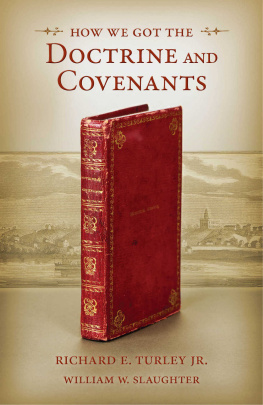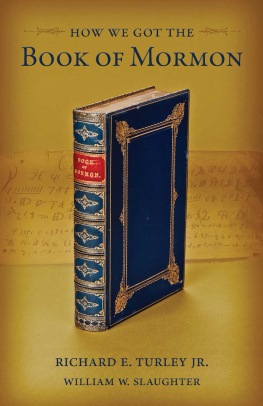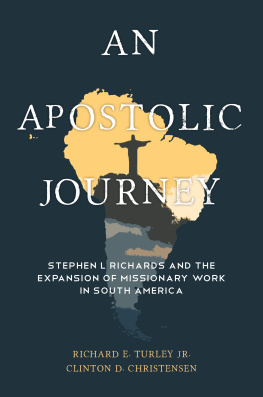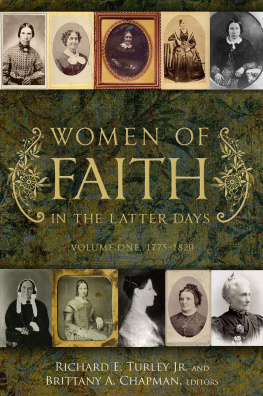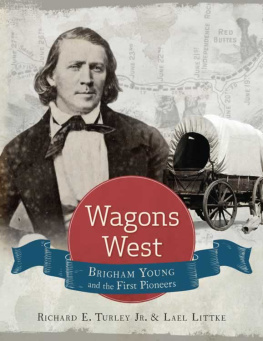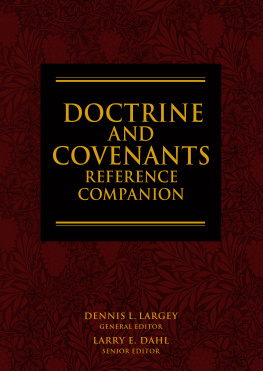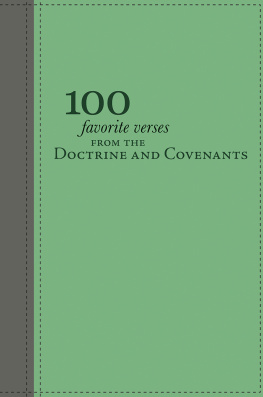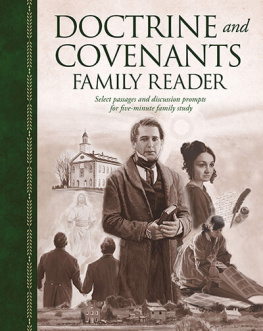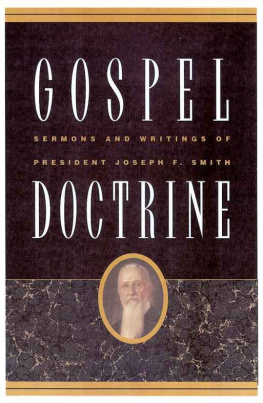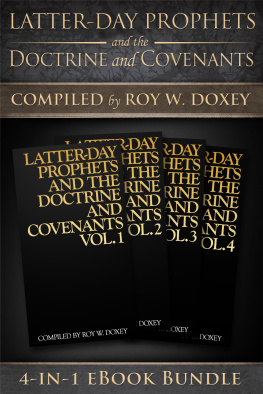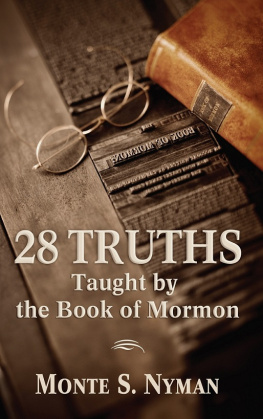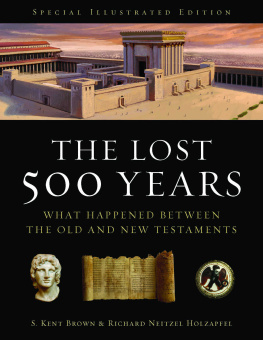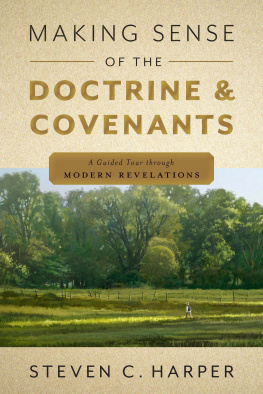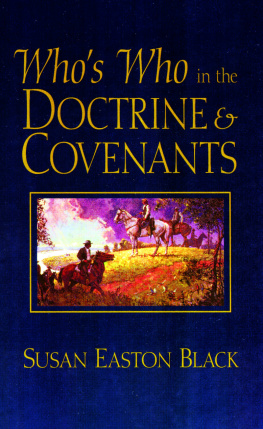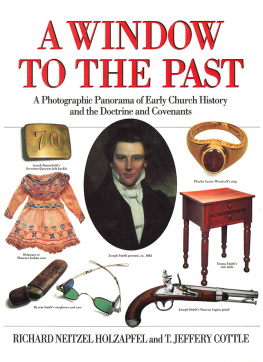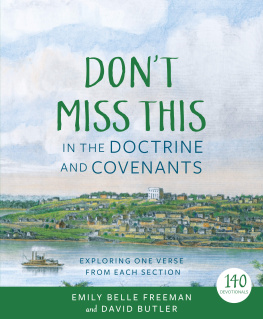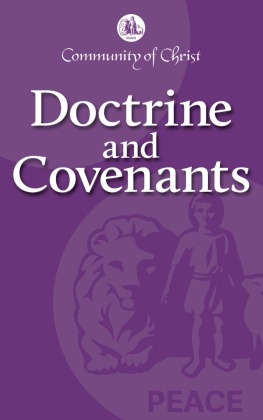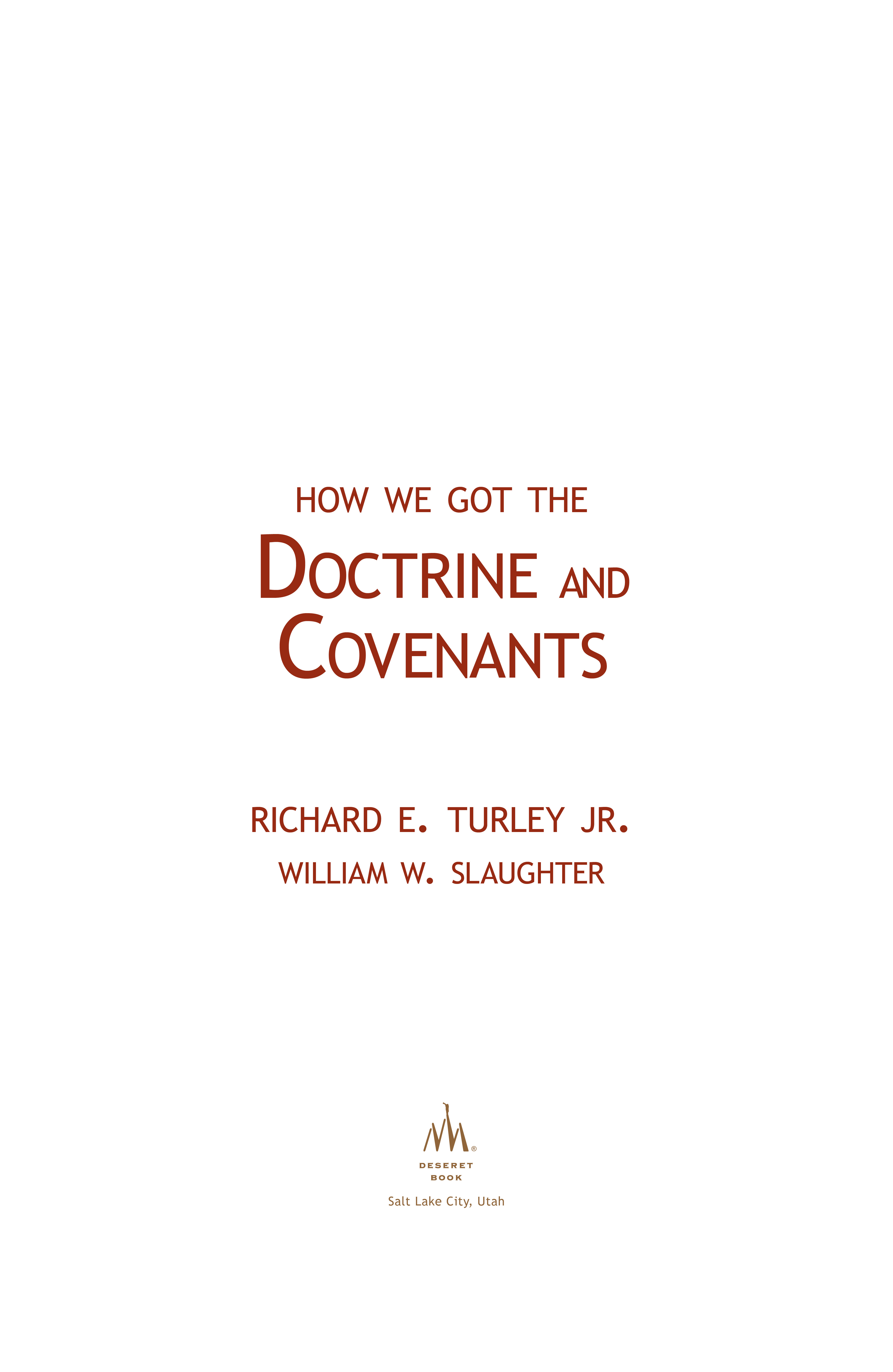2012 William W. Slaughter; Richard E. Turley Jr..
Any uses of this material beyond those allowed by the exemptions in U.S. copyright law, such as section 107, Fair Use, and section 108, Library Copying, require the written permission of the publisher, Religious Studies Center, 167 HGB, Brigham Young University, Provo, Utah 84602. The views expressed herein are the responsibility of the authors and do not necessarily represent the position of Brigham Young University or the Religious Studies Center.
Unless noted below, all photographs or images are courtesy of the Church History Library, The Church of Jesus Christ of Latter-day Saints. Used by permission.
Page 9: Photograph of Kirtland Temple attic; courtesy of Community of Christ.
Page 20: Colorized engraving of Jackson County Courthouse, 1836. Courtesy of Jackson County (Mo.) Historical Society Archives.
Page 34: Photograph of title page of 1833 Book of Commandments owned by Mary Elizabeth Rollins; courtesy of DeGolyer Library, Southern Methodist University.
Page 47: Robin Scott Jensen, Richard E. Turley, Jr., and Riley M. Lorimer, eds., Published Revelations, vol. 2 of the Revelations and Translations series of The Joseph Smith Papers, edited by Dean C. Jessee, Ronald K. Esplin, and Richard Lyman Bushman (Salt Lake City, UT: Church Historians Press, 2011), 296.
Page 63: Photograph of Ebenezer Robinson; courtesy of Community of Christ.
Page 76: Engraving by W. Watkins of Stationers Hall, London, 1830. Courtesy of Antiqueprints.
Page 100: Photograph of W. B. Conkey Company, 1909. Courtesy of Collection of Steven R. Shook.
Page 122: Photograph of Christus; Hemera/Thinkstock.
Cover and pages 7, 8, 12, 16, 17, 19, 37, 38, 78, 83, 84, 87, and 117: Photography by Matt Reier.
Library of Congress Cataloging-in-Publication Data
Turley, Richard E. (Richard Eyring), 1956, author.
How we got the Doctrine and Covenants / Richard E. Turley Jr. and William W. Slaughter.
pages cm
Includes bibliographical references and index.
ISBN 978-1-60907-150-9 (hardbound : alk. paper)
1. Doctrine and CovenantsHistory. 2. The Church of Jesus Christ of Latter-day SaintsHistory. I. Slaughter, William W., 1952, author. II. Title.
BX8628.T87 2012
298.3'2dc232012019756
Printed in the United States of America
Worzalla Publishing Co., Stevens Point, WI
10 9 8 7 6 5 4 3 2 1
Preface
Our purpose in writing this book is to help other members of The Church of Jesus Christ of Latter-day Saints better understand the history of the Doctrine and Covenants, a work we revere as scripture. The 1981 edition of the Doctrine and Covenants boldly declares that it is a collection of divine revelations and inspired declarations given for the establishment and regulation of the kingdom of God on the earth in the last days.
We have tried to make this book straightforward and easy to read. At the same time, we have drawn on the best historical sources so that this volume rests on the best available evidence. Readers can verify the facts in our book by consulting the sources cited in the notes, which we have deliberately tucked in the back so as not to interrupt our narrative. For ease of reading, we have followed widely accepted editing practices in modernizing some spelling, punctuation, and capitalization.
Our book contains stories or statements of belief that will be familiar to Latter-day Saints but may seem new or foreign to others. To the latter, we recommend Samuel Taylor Coleridges widely recognized admonition to adopt that willing suspension of disbelief for the moment, which constitutes poetic faith. Doing so will help them better understand what Latter-day Saints believe.
We wish to thank the many people who helped make this book a reality. Following the pattern we established with the first book in this seriesHow We Got the Book of Mormonour designer, Heather Ward, spent long hours helping to integrate the text and visuals. Matthew Reier took excellent photographs.
At Deseret Book, Sheri Dew, Cory Maxwell, Anne Sheffield, and Richard Erickson encouraged our work from the beginning. Suzanne Brady, our editor, applied her skills with typical grace and good humor.
Our colleagues in the Church History Department of The Church of Jesus Christ of Latter-day Saints and elsewhere provided help and suggestions. Glenn Rowe was endlessly patient in providing access to rare materials. April Williamsen facilitated image and document scanning. Matthew C. Godfrey, Matthew J. Grow, Robin Scott Jensen, Reid L. Neilson, Eric C. Olson, and Robert J. Woodford provided peer review. Elders Russell M. Nelson, Jeffrey R. Holland, Marlin K. Jensen, and Marcus B. Nash generously offered their insights, although we alone are responsible for the final contents of the volume.
Finally, we wish to thank our families, especially our wivesShirley Swensen Turley and Sheri E. Slaughterfor their help, support, and patience.
We hope readers find this book interesting, informative, and inspiring.
Notes
Explanatory Introduction, Doctrine and Covenants (1981).
Biographia Literaria (London: William Clowes and Sons, 1817), 145.
Alma 32:27.
Prologue
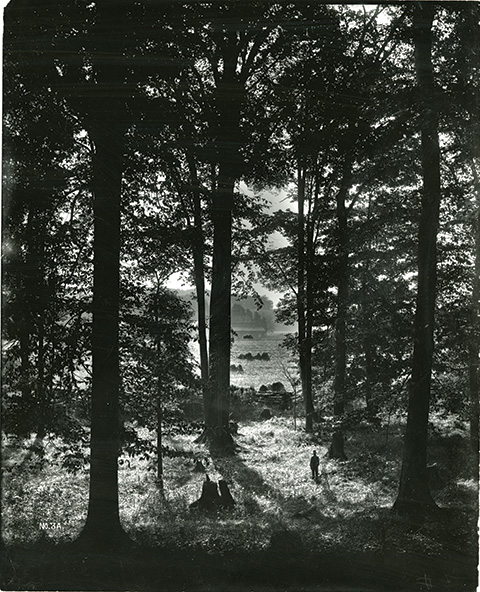
The Sacred Grove in upstate New York, where in 1820 Joseph Smith experienced his First Vision and came to know for himself that God can speak to man.
There are three classes of mankind in Christendom; one acknowledges a God of revelation, with power to speak to the people; another, that God can not speak, and must not speak; and the third class are infidels, and believe there is no God. Thus spoke Parley Parker Pratt, an influential early apostle of what became The Church of Jesus Christ of Latter-day Saints.
Latter-day Saints, commonly known as Mormons, acknowledge a God of revelation. The Churchs Articles of Faith declare, We believe all that God has revealed, all that He does now reveal, and we believe that He will yet reveal many great and important things pertaining to the Kingdom of God.
The founding prophet of the Church, Joseph Smith, learned this lesson for himself in the spring of 1820 when he went into the woods near his home in upstate New York to pray for guidance on which church to join and to seek remission of his sins. His prayer was prompted by reading a passage in the New Testament book of James that instructed, If any of you lack wisdom, let him ask of God, that giveth to all men liberally, and upbraideth not; and it shall be given him.
According to the Latter-day Saint Bible Dictionary, revelation is the making known of divine truth by communication with the heavens and embraces many forms, including visions, dreams, or visitations, as well as individual guidance for every person who seeks for it and follows the prescribed course.
In the last sense, Joseph Smiths first revelations actually preceded his First Vision. In an account written in his own hand, Joseph recorded, At about the age of twelve years my mind bec[a]me seriously impressed with regard to the all important concerns for the welfare of my immortal Soul which led me to searching the scriptures. That impression to study holy writ was a revelation, which led to even more revelations later.
Joseph was nurtured on the Bible and had heard passages from it on many occasions both in his own home and in sermons. But the passage in James that led to the First Vision struck him most powerfully of all: Never did any passage of scripture come with more power to the heart of man than this did at this time to mine, he wrote. It seemed to enter with great force into every feeling of my heart. That great force too was revelation.

